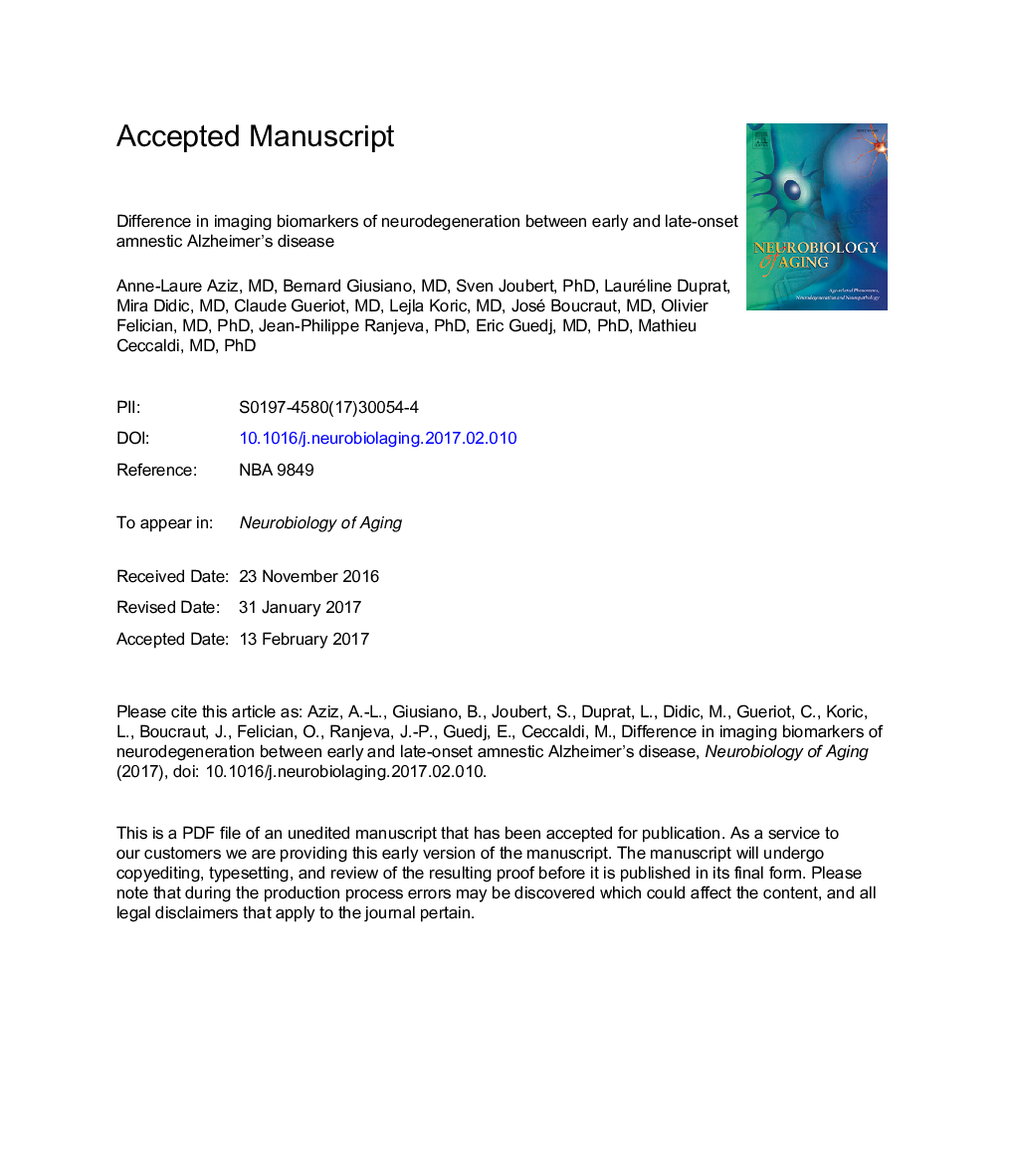| Article ID | Journal | Published Year | Pages | File Type |
|---|---|---|---|---|
| 4932545 | Neurobiology of Aging | 2017 | 36 Pages |
Abstract
Neuroimaging biomarkers differ between patients with early-onset Alzheimer's disease (EOAD) and late-onset Alzheimer's disease (LOAD). Whether these changes reflect cognitive heterogeneity or differences in disease severity is still unknown. This study aimed at investigating changes in neuroimaging biomarkers, according to the age of onset of the disease, in mild amnestic Alzheimer's disease patients with positive amyloid biomarkers in cerebrospinal fluid. Both patient groups were impaired on tasks assessing verbal and visual recognition memory. EOAD patients showed greater executive and linguistic deficits, while LOAD patients showed greater semantic memory impairment. In EOAD and LOAD, hypometabolism involved the bilateral temporoparietal junction and the posterior cingulate cortex. In EOAD, atrophy was widespread, including frontotemporoparietal areas, whereas it was limited to temporal regions in LOAD. Atrophic volumes were greater in EOAD than in LOAD. Hypometabolic volumes were similar in the 2 groups. Greater extent of atrophy in EOAD, despite similar extent of hypometabolism, could reflect different underlying pathophysiological processes, different glucose-based compensatory mechanisms or distinct level of premorbid atrophic lesions.
Keywords
Related Topics
Life Sciences
Biochemistry, Genetics and Molecular Biology
Ageing
Authors
Anne-Laure Aziz, Bernard Giusiano, Sven Joubert, Lauréline Duprat, Mira Didic, Claude Gueriot, Lejla Koric, José Boucraut, Olivier Felician, Jean-Philippe Ranjeva, Eric Guedj, Mathieu Ceccaldi,
